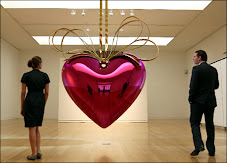Comments on Paul Greenhalgh’s lecture, at Alfred University, 2001.
I appreciate Greenhalgh’s ideas and his understanding of modernity.
I like what he said about all ceramic vessels having many sources and roots, even if unknown to the artist.
So, there was Modern Art, and the idea of modernity had much to do with progress.
This is wonderful, for we would not want to be in a stagnant world with stagnant arts, though I don’t believe this was ever true.
Modernist ceramics? Post modern? Complex modernism? What is next?
I make post, post, post modern cups.
“How can there be an “after” when there was no during” Paul asked.
This is a good question. Why is there a need for such extensive categorization?
Do artists or art historians feel like we need to move into a new era every ten years?
Concerning the questions presented about economic value, there can be no standard cost of ceramic, as there is for gold. That is absurd. The value of a ceramic object, as well as the social function, is relative to the socio-economic environment of the society who holds it. Within ceramics lie many functions and styles. I do not believe in one ceramic function, style or economic value. It should not be such an issue to find ceramic’s place in art history, or contemporary art. I am tired of these questions. I am tired of hearing ceramic artists feeling like they have to prove themselves, or fight their way into the “high-art” world. Just as common is a disassociation with the craft world, which is primarily what ceramics still is today.
I don’t care if ceramics ever gets the privilege of being part of modernism.
Subscribe to:
Post Comments (Atom)
.jpg)











No comments:
Post a Comment